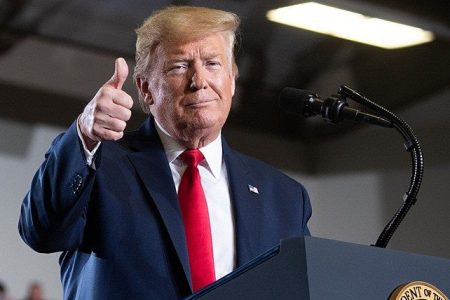US President Donald Trump indicated earlier this week that he may soften his stand on imposing reciprocal tariffs against countries that, in his opinion, rip his country off by imposing huge tariff barriers against US exports.
Given the fact that the threatened duties are to kick in on April 2, less than a week from now, these indications are welcome. At a White House briefing, Trump said he may give a ‘lot of countries’ breaks on tariffs but did not elaborate. It appears from US media reports that Trump might narrow his approach to the broad spectrum of commodities that he had threatened to tax at US borders.
Media reports also suggested that Trump will focus his reciprocal tariffs on countries that have the biggest trade surplus with the US and high tariff and non-tariff barriers. There were suggestions that these would be aimed at a group of 10 to 15 countries.
China tops the list of countries with whom the US has big trade deficits, while India clocks in at 11th position. Considering the fact that the relatively small economies of Thailand (10th), Switzerland (13th) and Malaysia (14th) are among the top 15 on this list, India should not feel too relieved, especially in the context of Trump’s diatribes against India’s trade and tariff policies. But there is a way India could open a dialogue with the US.
Trump has been inveighing against India’s high tariff barriers since the time of his first presidency, but he has been silent on the issue of non-tariff barriers when it comes to the specifics.
It has been shown, however, that India imposes a far less rigorous regime of non-tariff barriers – quantitative quotas, licensing rules, quality standards, or health and safety checks – than the US itself, along with other big economies. Let us look at some figures.
India imposes non-tariff barriers on 47 per cent of its imports. This figure is 77 per cent in the case of the US and 90, 92, 61, 75 and 92 for China, the UK, Japan, Brazil and Germany, respectively. Moreover, on another metric that looks at the limiting of imports into the country, the US scores 83 per cent, while India is at 69 per cent.
The other countries mentioned above clock, in order, 92, 89, 76, 84 and 89. In other words, India has a relatively much less restrictive trade policy when viewed from an overall perspective. With Trump showing signs of softening, prompted, perhaps, by the spectre of unleashing a global trade crisis, India should bring up the issue of non-trade tariffs both bilaterally with the US and multilaterally on the World Trade Organisation forum. But, certainly, New Delhi should not back down in the face of aggressive posturing.

